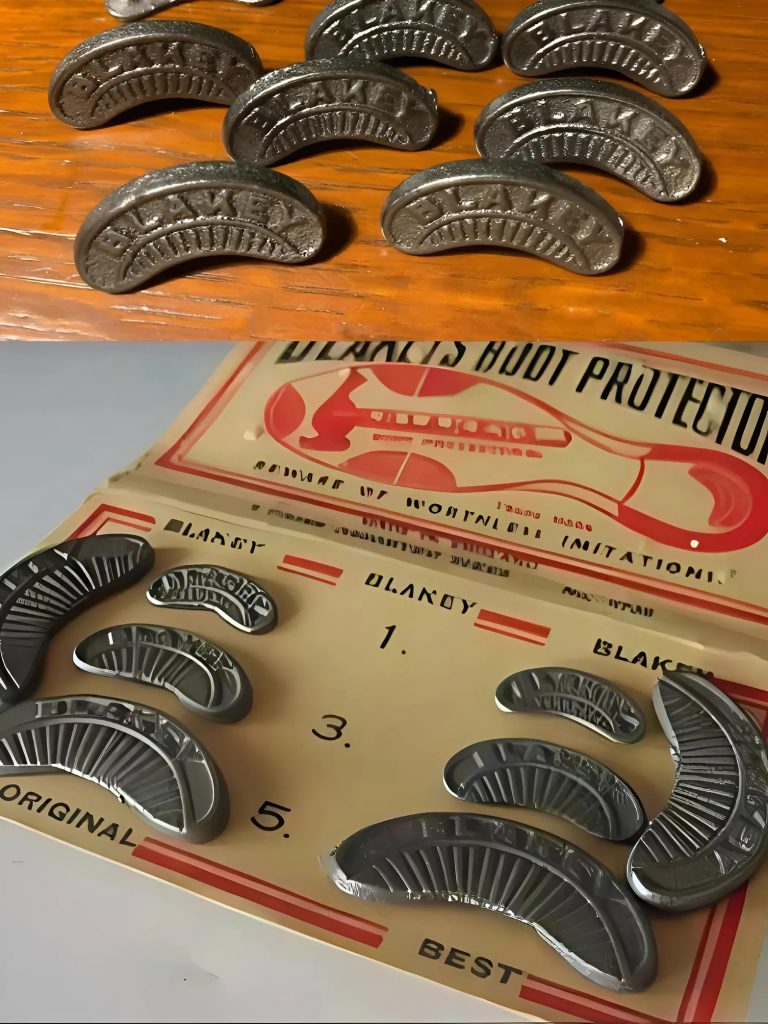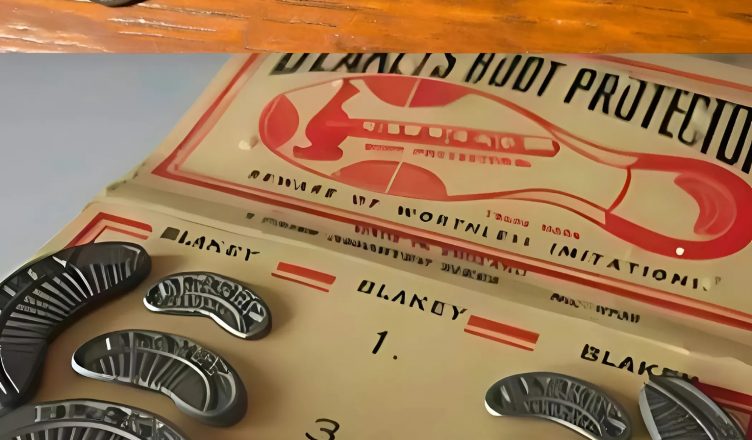Imagine a cobblestone street, a warm sunny day, and the rhythmic clinking of footsteps echoing through the air.
This sound was once the hallmark of an era, familiar to everyone who lived before the rise of sneakers and synthetic soles.
Before mass-produced footwear flooded the market, real leather shoes were considered a luxury, a status symbol, and a prized possession to be treasured and cared for.
How It All Began
Crafting shoes once required genuine skill.
Each pair was made by hand, with natural materials chosen for durability and elegance.
However, even the finest leather wore down over time, especially at critical points like the heels and toes.
To extend the life of these precious shoes, cobblers devised a simple yet ingenious solution: metal taps, known in English as «segs,» affixed to the soles.
These small but sturdy metal inserts became an essential feature of both men’s and women’s shoes, serving not just a functional purpose but becoming part of everyday culture.
What Metal Taps Were
A metal tap was typically crafted from steel and shaped like a small horseshoe or segment.
Its primary purpose was to protect the most vulnerable parts of the shoe — the heel and sometimes the toe — from wear and tear.
The advantages were clear:
Greatly increased shoe lifespan.
Reduced need for frequent repairs.
The distinctive, sharp sound when walking, which became a defining characteristic of urban life.
Many remember this sound fondly: each step striking the pavement with a confident, resonant clang that added a sense of pride and authority to every stride.
The Metallic Echo of an Era
The memory of metal taps is deeply intertwined with the bustling life of mid-20th-century cities.
The clatter of footsteps on morning streets, the echoing halls of government offices, the polished corridors of theaters — all of it created a unique soundscape.

Metal taps symbolized not only fashion but discipline, precision, and craftsmanship.
Shoemakers spent hours carefully fitting each tap, customizing it to suit the exact curvature of the shoe, ensuring maximum protection and perfect sound.
Why Metal Taps Disappeared
Times changed.
Manufacturing methods evolved:
Mass production replaced handcraftsmanship.
Synthetic materials and rubber soles became the norm.
Shoes became cheaper, lighter, and more disposable.
As footwear shifted towards affordability and convenience, the need for metal taps dwindled.
Replacing shoes was now often cheaper than repairing them.
The dominance of sneakers, moccasins, and casual footwear sealed the fate of the once-iconic metal tap.
Nostalgia for a Forgotten Sound
Today, the metallic clink of footsteps is a rare, almost ghostly sound.
Yet for those who remember, it triggers an instant wave of nostalgia.
It is the sound of another time — a time when things were made to last, and walking down the street carried a certain dignity.
Collectors, traditional shoemakers, and lovers of vintage style still honor the legacy of metal taps.
Some bespoke cobblers continue to offer metal taps for fine leather shoes, especially classic models like Oxfords, Derbies, and English brogues.
What Metal Taps Symbolize Today
In the modern world, a metal tap on a shoe is more than a practical feature.
It is a statement:
A commitment to tradition.
A resistance against the culture of disposability.
A reverence for craftsmanship and quality.
The sound of a metal tap striking the ground is a reminder that every step we take matters — and that how we walk through life leaves an impression worth preserving.
Conclusion
Only true nostalgists will immediately recognize and appreciate the simple, profound beauty behind that unforgettable sound.
The metal tap on a heel is not just a piece of steel.
It is a piece of history, an echo of an era when footsteps were bold, proud, and meaningful.
While the world around us changes at a dizzying pace, the memory of such small but significant details continues to endure — anchoring us to a past rich with elegance, craftsmanship, and authenticity.
